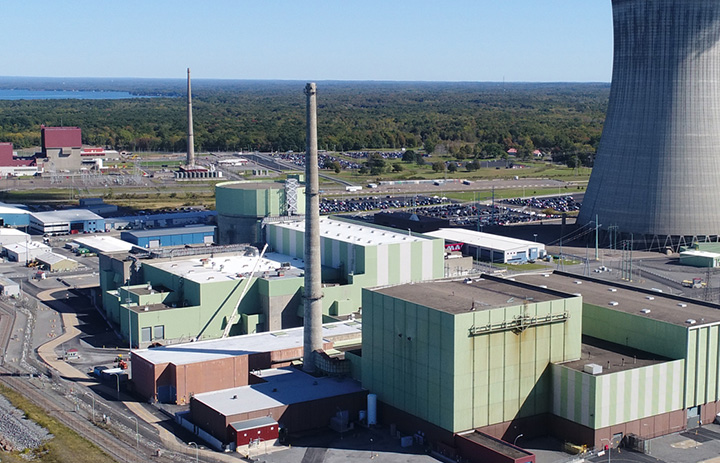 The US Department of Energy (DOE) has said that hydrogen has the potential to play a significant role in the transition to 100% clean energy. DOE estimates that a single 1,000MWe reactor could produce up to 150,000 tons of hydrogen a year. It can be used across multiple sectors to store and deliver usable energy to power the grid, drive industrial processes, or create energy dense fuels needed for long-haul trucks and airplanes.
The US Department of Energy (DOE) has said that hydrogen has the potential to play a significant role in the transition to 100% clean energy. DOE estimates that a single 1,000MWe reactor could produce up to 150,000 tons of hydrogen a year. It can be used across multiple sectors to store and deliver usable energy to power the grid, drive industrial processes, or create energy dense fuels needed for long-haul trucks and airplanes.
“But, around 95% of the hydrogen currently produced in the United States comes from natural gas – resulting in carbon emissions. That’s why the Department of Energy is investing billions to help lower the cost and scale-up the production of clean hydrogen by leveraging the nation’s existing energy assets, including nuclear power plants,” DOE said.
Most of the hydrogen currently produced in the US is made through steam-methane reforming whereby methane reacts with high-temperature steam to produce carbon monoxide, carbon dioxide, and hydrogen. However, hydrogen can be produced without emissions using low- and high-temperature electrolysis by splitting water into pure hydrogen and oxygen.
“High-temperature electrolyzers use both heat and electricity to split water and are more efficient. Traditional and advanced nuclear reactors are well-suited to provide this constant heat and electricity needed to produce clean hydrogen, which could open new markets for nuclear power plants,” DOE noted.
DOE’s Office of Energy Efficiency & Renewable Energy (EERE) and the Office of Nuclear Energy (NE) have already started teaming up with utilities to support four hydrogen demonstration projects at NPPs.
The four projects include:
- Nine Mile Point Nuclear Power Station (Oswego, NY): DOE is supporting the construction and installation of a low-temperature electrolysis system at the Nine Mile Point NPP. The project will be the first nuclear-powered clean hydrogen production facility in the US and will use the hydrogen to help cool the plant. Plant owner Constellation plans to begin producing hydrogen before the end of the year.
- Davis-Besse Nuclear Power Station (Oak Harbor, OH): Energy Harbor is working to demonstrate a low-temperature electrolysis system at the Davis–Besse Nuclear Power Station. The goal is to prove the technical feasibility and economic benefits of clean hydrogen production, which could facilitate future opportunities for large-scale commercialisation. The single unit reactor is expected to produce clean hydrogen by 2023.Potential uses could be sold for local manufacturing and transportation services, including fuel for a local bus fleet.
- Prairie Island Nuclear Generating Plant (Red Wing, MN): Bloom Energy and Xcel Energy are working on a first-of-a-kind project to demonstrate high-temperature electrolysis at the Prairie Island Nuclear Generating Plant. The data collected from this demonstration will be used to scale up this process. Hydrogen production is expected to begin in early 2024.
- Palo Verde Generating Station (Tonopah, AZ): DOE is negotiating an award with Arizona Public Service (APS) and PNW Hydrogen to demonstrate another low-temperature electrolysis system at the Palo Verde Generating Station. The hydrogen will be used to produce electricity during times of high demand or to make chemicals and other fuels. The project could start producing hydrogen in 2024, pending the completion of award negotiations.
DOE is continuing to support the development and maturation of clean hydrogen production, including funding for six to ten regional clean hydrogen hubs across the USA through the Bipartisan Infrastructure Law. At least one of the hubs will be focused on clean hydrogen production using nuclear energy.
Additional funding, through Inflation Reduction Act, also includes support for clean hydrogen production via tax credits that will award up to $3/kg for low carbon hydrogen. All of this work supports DOE’s Hydrogen Shot goal of reducing the cost of clean hydrogen by 80% to $1 per 1 kilogram in one decade. “Reaching this cost reduction goal would open new markets for hydrogen, in addition to creating more clean energy jobs, reducing greenhouse gas emissions, and making America a more competitive actor in the global clean energy market.”
Image: Nine Mile Point nuclear power plant (courtesy of Constellation Energy)






